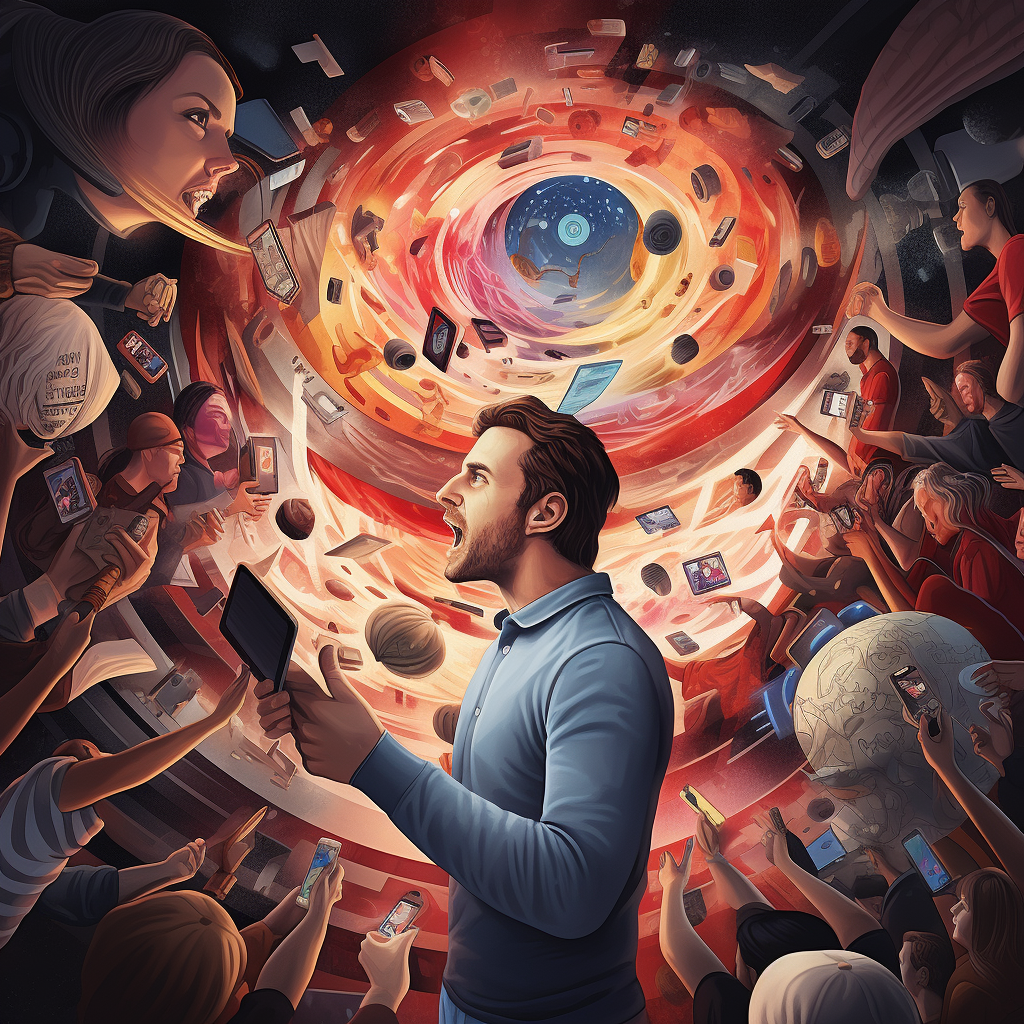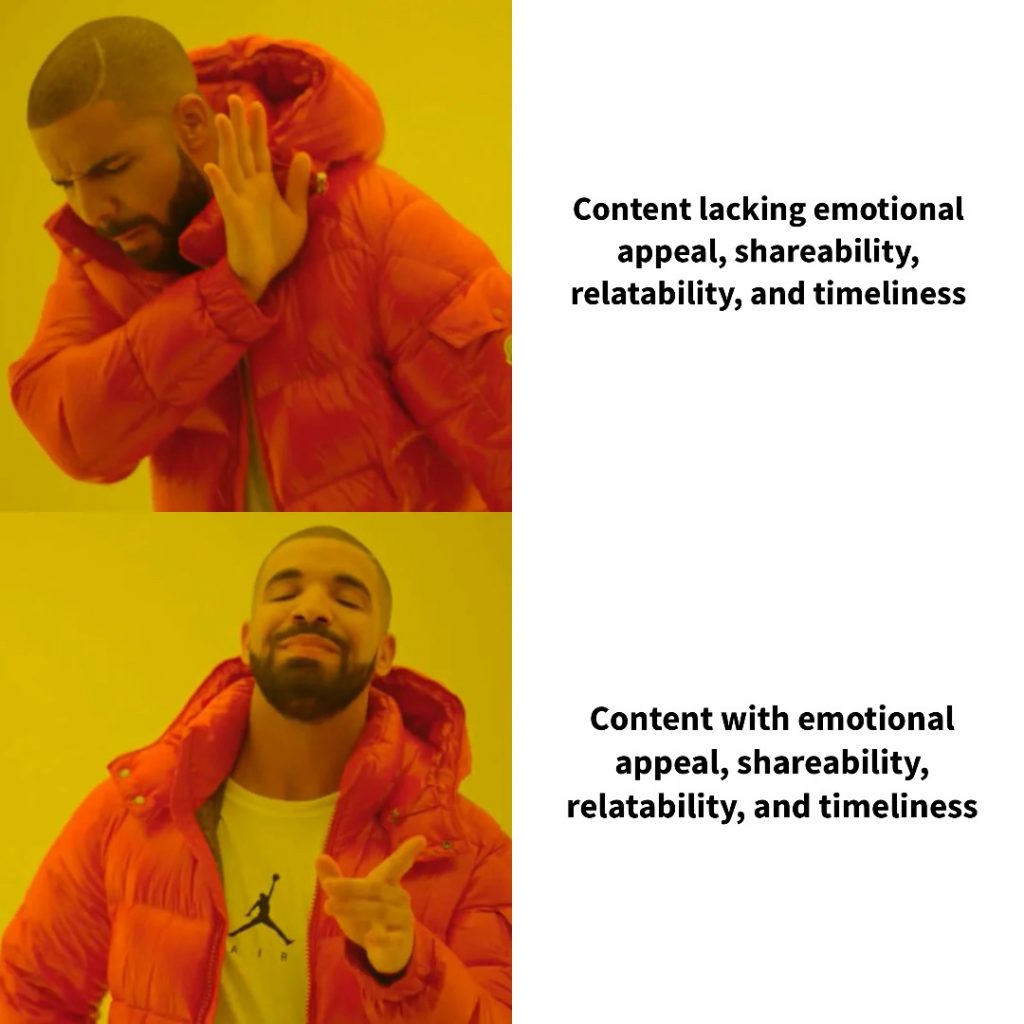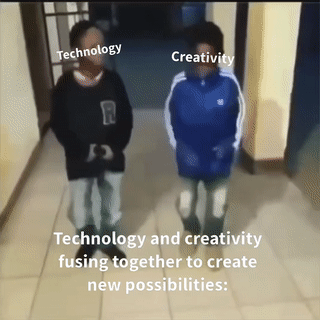Reading Time: 10 minutes

Introduction
In the vast digital landscape, one term has consistently captured the attention of marketers and audiences alike: viral marketing. At its core, viral marketing refers to a strategy in which businesses create content designed to be widely shared among users, often snowballing in popularity and reaching far beyond the company’s usual audience. It’s not just about creating any content, but content that resonates deeply, evokes emotions, and compels sharing.
The importance of virality in today’s digital age cannot be overstated. In a world saturated with information, viral content breaks through the noise, giving brands unparalleled visibility, engagement, and potential for organic growth. When something goes viral, it doesn’t just lead to clicks or views; it creates conversations, sparks emotions, and can even influence culture. For businesses, virality is the golden ticket to reach masses, making it an essential tool in modern marketing arsenals.
Elements That Make Marketing Content Go Viral
Viral marketing content, though often seemingly spontaneous, is underpinned by specific elements that fuel its spread. These elements tap into the very core of human behavior and interaction, ensuring the content resonates and is passed from person to person. Let’s delve into what makes content contagious:
1. Emotional Appeal: The most powerful viral content evokes strong emotions. Whether it’s laughter, tears, anger, or joy, content that stirs deep feelings within the audience is more likely to be shared. It’s the rush of emotion that compels us to hit ‘share,’ wanting others to experience what we feel. A poignant story, a hilarious skit, or an awe-inspiring visual can all be triggers.
2. Shareability: It’s not enough for content to be appealing; it has to be designed for sharing. This means it’s easily accessible, consumable, and crafted in a format that’s native to popular platforms. Think of the quick, engaging videos of TikTok or the eye-catching infographics on Pinterest. Content that simplifies complex ideas or offers a fresh perspective often enjoys higher shareability.
3. Relatability: For content to spread, it needs to strike a chord with a broad audience. Universally understood themes, stories, and humor ensure that a wide range of people can connect with the content. When something is relatable, it’s as if it’s speaking directly to us, capturing moments, feelings, or thoughts we’ve had, making us more likely to share it with others.
4. Timeliness: Being in tune with the zeitgeist is crucial. Content that aligns with current events, popular culture, or trending topics has a higher chance of going viral. It’s about capturing the moment and riding the wave of what people are talking about. This could be a meme related to a recent news story, a hashtag challenge on a social platform, or content that addresses a prevailing social issue.
Harnessing these elements is the key to creating content that doesn’t just resonate, but ripples through networks and communities, earning the coveted status of “viral.”

The Right Platforms for the Right Content
In the digital age, it’s not just about creating brilliant content; it’s also about placing it on the right platform to ensure maximum visibility and engagement. Different platforms cater to different audiences and content formats, and understanding this distinction is key to a successful viral marketing strategy. Here’s a closer look at how various platforms can be optimized for virality:
1. Social Media Platforms: Platforms like Instagram excel in delivering visually compelling narratives. With its emphasis on aesthetic, stories, and bite-sized content, Instagram is the perfect medium for brands to craft visual journeys. Example: Nike’s “Dream Crazy” Campaign. This campaign, featuring Colin Kaepernick, was visually arresting and instantly shareable, igniting conversations across the globe. Through a series of striking images and stories, Nike tapped into ongoing social discussions, making it a massive hit on Instagram.
2. Video Platforms: YouTube stands as a testament to the power of video content. Its long-form content allows for deeper narratives, humor, and storytelling, making it an ideal space for brands to connect with audiences on a personal level. Example: Dollar Shave Club’s debut video. With a mix of humor, relatability, and a clear value proposition, Dollar Shave Club’s introduction video became an instant sensation on YouTube, garnering millions of views and putting the brand on the map.
3. Blogging: While often overlooked in the age of visual media, written content can be just as viral. Engaging articles, combined with powerful visuals, can drive tremendous traffic and elevate a brand’s visibility. Example: BuzzFeed’s Tasty food videos and articles. Tasty brilliantly marries video content with accompanying articles. Readers can watch mouth-watering food videos and then dive into detailed articles for recipes, making the content both shareable and practical.
User-Generated Content (UGC) — A Goldmine for Virality
In today’s digital landscape, one of the most potent forms of content isn’t created by brands but by their users. User-Generated Content (UGC) stands at the crossroads of authenticity and engagement, offering a genuine perspective that resonates deeply with audiences. When consumers become creators, brands can tap into a reservoir of authentic stories and experiences that naturally drive virality.
The Power of Authenticity and Peer Recommendations: At its core, UGC is a testament to the genuine love and engagement users have with a brand. It’s raw, unfiltered, and real. When peers advocate for a brand or share their experiences, it carries a weight of authenticity that polished brand campaigns might lack. It’s the difference between hearing about a product’s greatness from a brand versus hearing it from a trusted friend. The latter always wins.
Example: Coca-Cola’s “Share a Coke” campaign stands as a shining beacon of UGC done right. By personalizing bottles with common names and encouraging users to share their “Coke moments,” Coca-Cola turned consumers into marketers. People across the globe eagerly searched for bottles with their names, shared photos, and celebrated moments with loved ones, all while highlighting the Coca-Cola brand. The personal touch led to an avalanche of sharing, making it one of the most memorable and viral campaigns in recent history.
Tapping into UGC isn’t just about leveraging content; it’s about building a community, fostering genuine relationships, and allowing consumers to be a part of the brand’s narrative. In the race for virality, UGC is indeed a goldmine waiting to be unearthed.
Leveraging Influencers to Amplify Reach
In the sprawling digital ecosystem, influencers have emerged as powerful beacons, guiding millions of followers through trends, products, and lifestyle choices. Their reach, built on trust and authenticity, offers brands a unique opportunity to connect with audiences on a more personal level.
Understanding the Importance of Influencer Collaborations: The meteoric rise of influencer marketing isn’t just about numbers; it’s about influence, aptly named. Influencers, with their curated content and niche audiences, provide brands with a direct channel to engaged followers. Collaborations with these digital celebrities allow brands to merge their messaging with the influencer’s voice, creating content that’s both authentic and resonant.
Example: Daniel Wellington, a watch brand, offers a masterclass in influencer collaborations. Instead of massive advertising campaigns, the brand opted to send their elegant watches to a selection of influencers, ranging from high-profile celebrities to micro-influencers with a more niche following. These influencers, in turn, showcased the watches in their daily lives, creating organic, aspirational content. The result? An explosion in brand visibility and a surge in sales, all powered by the authentic endorsements of influencers.
In the modern marketing landscape, influencers are more than just content creators; they’re bridge builders, connecting brands to audiences with trust and authenticity. Leveraging these influencers can catapult a brand’s reach and resonance, making it a strategy too potent to overlook.
Integration of Technology and Creativity
In the rapidly evolving world of digital marketing, technology and creativity are no longer siloed entities. They intertwine, creating a tapestry of experiences that captivate audiences in unprecedented ways. As technology leaps forward, it provides marketers with innovative tools to tell their stories, making campaigns more interactive, immersive, and impactful.
Interactive and AR Campaigns: Augmented Reality (AR) stands at the forefront of this technological revolution. By overlaying digital information on the real world, AR creates a blend of the physical and digital realms, offering users a unique, immersive experience. When combined with creative storytelling, AR campaigns can transport audiences to new worlds or offer fresh perspectives on familiar surroundings.
Example: Pepsi’s AR Bus Shelter Campaign serves as a testament to the power of combining technology with creativity. Instead of a traditional advertisement on a bus shelter, passersby were treated to a live augmented reality experience. The screen displayed what seemed to be a live feed of the street behind it, but soon, fantastical elements like aliens, tigers, and UFOs appeared, seemingly interacting with the unaware people and the environment. The campaign not only showcased Pepsi’s innovative spirit but also turned an everyday setting into an extraordinary spectacle, capturing attention and creating buzz.
The fusion of technology and creativity pushes the boundaries of what’s possible in marketing. With every technological advancement, a door opens to new creative possibilities, beckoning brands to explore, innovate, and captivate.

Challenges in Chasing Virality
The allure of virality is undeniable. With just one campaign, brands can skyrocket to fame, leaving an indelible mark on the cultural zeitgeist. However, the path to viral stardom is fraught with challenges, making it a high-risk, high-reward endeavor for marketers.
Unpredictability of Viral Success: One of the most significant challenges in achieving virality is its inherent unpredictability. While certain elements might enhance the potential for content to go viral, there’s no guaranteed formula for success. What resonates with one audience might fall flat with another, and trends can change in the blink of an eye.
Potential for Negative Publicity: Chasing virality also comes with the risk of backlash. If a campaign is perceived as tone-deaf, insensitive, or out of touch, it can quickly spiral into a PR nightmare.
Example: Pepsi’s ad featuring Kendall Jenner serves as a cautionary tale. Intended to promote unity, the ad showed Jenner handing a Pepsi can to a police officer during a protest, seemingly resolving the tension. The ad faced immense backlash for trivializing serious societal issues and was promptly pulled from the airwaves. Instead of the positive virality Pepsi hoped for, the brand found itself at the center of a negative viral storm.
Striking a Balance Between Brand Message and Viral Appeal: Another challenge lies in maintaining brand integrity while attempting to create content with viral potential. Brands must ensure that their message doesn’t get lost in the quest for shares and likes. Striking a balance between staying true to the brand’s values and crafting content with broad appeal can be a delicate dance.
Measuring the Success of Viral Campaigns
In the digital age, where content can spread like wildfire across platforms, achieving virality is often viewed as the pinnacle of success for marketers. But how do businesses truly measure the impact and success of a viral campaign? It’s crucial to understand that virality isn’t just about amassing views; it delves deeper into engagement, conversion, and brand recall.
Beyond Views: While views or impressions can give a preliminary insight into a campaign’s reach, they only scratch the surface of its true impact. A video may have been watched millions of times, but how many viewers actively engaged with it? Did they share, comment, or like? Did they visit the brand’s website afterward? And most importantly, did they make a purchase or engage in a desired action as a result of the campaign?
Engagement is a key metric here, indicating not just passive viewership but active interaction. It’s a sign that the content resonated, prompted discussion, and spurred action.
Conversion dives into the tangible results of a campaign. If the goal was to drive sales, how many viewers actually made a purchase? If it was to increase newsletter sign-ups, how many new subscriptions were garnered?
Brand Recall is another essential factor. Beyond immediate engagement and conversion, did the campaign leave a lasting impression? Can consumers recall the brand and the message after some time has passed? A truly successful viral campaign doesn’t just create a momentary buzz—it embeds itself into the collective memory.
How Businesses are Using Analytics Tools: Modern analytics tools offer a goldmine of data for businesses. Beyond basic metrics like views or likes, these tools can provide insights into viewer demographics, behavior flow, peak engagement times, and more. By dissecting this data, businesses can gain a comprehensive understanding of their campaign’s performance. They can see which aspects resonated most, which platforms yielded the best results, and where there’s room for improvement.
Moreover, with the rise of integrated marketing platforms, businesses can now track a viewer’s journey from the moment they engage with a viral piece to any subsequent actions they take—be it signing up for a newsletter, browsing products, or making a purchase. This end-to-end visibility is invaluable in measuring a campaign’s true ROI.
In summation, while achieving virality can be an adrenaline rush for brands, it’s crucial to look beyond the surface numbers to understand the deeper impact and success of a campaign. With the right metrics and tools, businesses can ensure they’re not just chasing virality for the sake of it, but harnessing its power to drive tangible, lasting results.
Future Predictions: The Next Big Wave in Viral Marketing
As we stand on the precipice of a new era in digital marketing, it’s essential to gaze into the horizon and ponder what the future might hold for viral campaigns. From the integration of cutting-edge technologies to evolving consumer preferences, the landscape of viral marketing is set to undergo transformative shifts.
Integration of Newer Technologies: The fusion of technology and creativity has always been at the core of standout marketing campaigns. With advancements in augmented reality (AR), virtual reality (VR), and artificial intelligence (AI), the next wave of viral marketing will likely be deeply intertwined with these technologies.
Imagine AR-driven campaigns where users can immerse themselves in brand stories right from their living rooms, or AI-powered content that adapts in real-time to user feedback, ensuring that the message always hits the mark. The possibilities are boundless, and marketers will need to stay abreast of these technological shifts to craft campaigns that resonate in the future.
Shifts in Consumer Behavior and Platform Preferences: Just as MySpace gave way to Facebook and then to platforms like Instagram and TikTok, we’ll undoubtedly witness the rise and fall of social media platforms. As newer platforms emerge and existing ones evolve, so will the preferences and behaviors of consumers.
Gen Z, for instance, has shown a penchant for short, snappy content, giving rise to platforms like TikTok. As we move forward, we might see a generation that leans more towards immersive experiences, propelling platforms that offer VR content into the limelight.
Moreover, with an increasing emphasis on privacy and data security, platforms that prioritize these elements might gain prominence. Brands will need to stay nimble, adapting their strategies based on where their audiences are migrating and how they’re consuming content.
The definition of “viral” itself might change. As audiences become more segmented and diverse, niche campaigns targeting specific communities might become the new norm, with ‘virality’ being measured in terms of depth of engagement rather than sheer breadth.
Conclusion
In the vast, ever-evolving realm of digital marketing, few phenomena have captured the imagination and delivered results quite like viral marketing. As we’ve traversed through its multifaceted dimensions, one thing becomes crystal clear: viral marketing isn’t just a fleeting trend; it’s a potent force driving modern business strategies.
At its core, viral marketing is more than just creating content that garners views or likes. It’s about striking that perfect chord with the audience—a blend of creativity, authenticity, and meticulous planning. The most memorable viral campaigns are those that touch the heart, evoke emotions, or simply resonate deeply with their audience. But this doesn’t happen by mere chance. Behind every viral sensation lies a well-thought-out strategy, a deep understanding of the target demographic, and an authentic message that aligns with the brand’s values.
Furthermore, as the digital landscape continues to shift and mold itself in response to new technologies and consumer behaviors, businesses must remain adaptable. What goes viral today might not necessarily do so tomorrow. Yet, the principles remain the same: genuine connection, creative storytelling, and strategic foresight.
In the digital marketing realm, viral marketing highlights the enduring power of human connection. Despite an age driven by algorithms, emotion, authenticity, and creativity remain paramount. For brands and marketers, the challenge is to tap into this power, balancing creativity, authenticity, and strategy.

